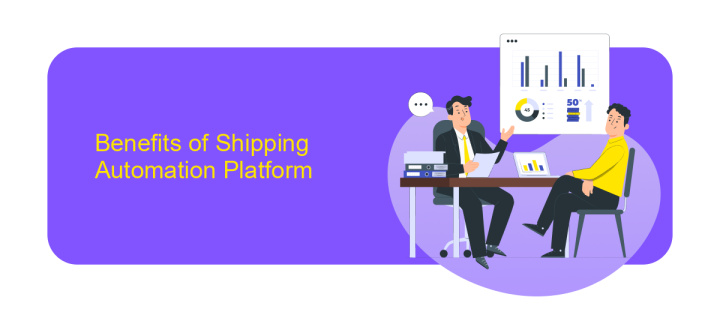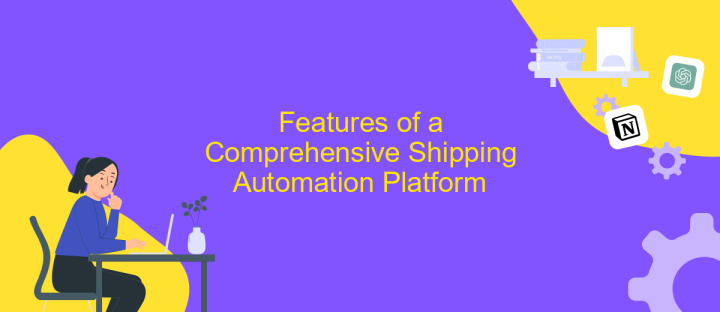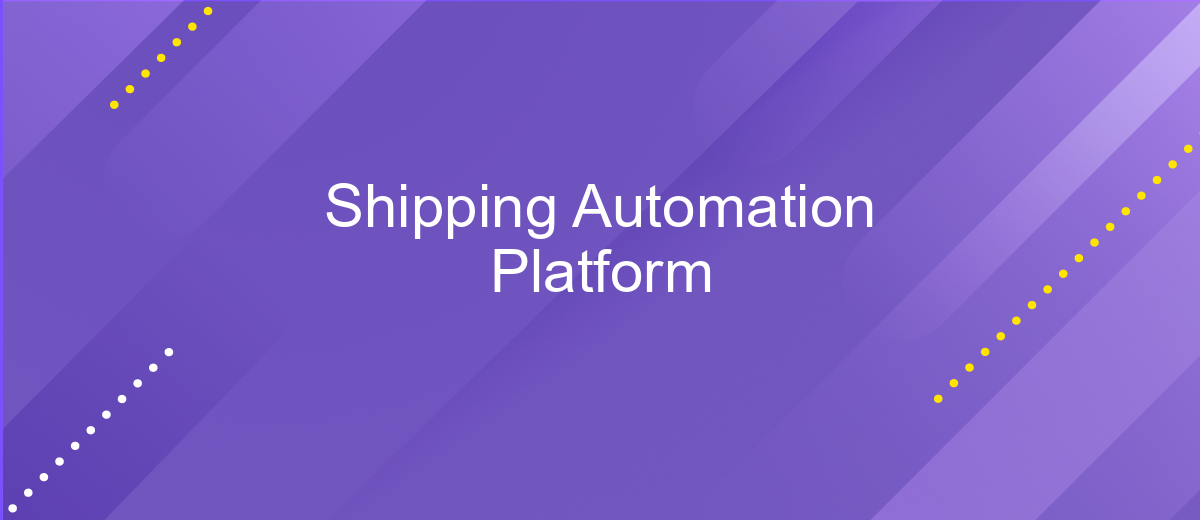Shipping Automation Platform
In today's fast-paced global market, efficiency and accuracy in shipping are paramount. A Shipping Automation Platform revolutionizes logistics by streamlining operations, reducing human error, and enhancing customer satisfaction. By integrating cutting-edge technology, these platforms enable businesses to automate shipping processes, optimize routes, and manage inventory seamlessly. Discover how adopting a shipping automation solution can transform your supply chain and drive growth in an increasingly competitive landscape.
Importance of Shipping Automation
In today's fast-paced global economy, shipping automation has become a crucial component for businesses aiming to streamline their logistics processes. By leveraging advanced technologies, companies can significantly reduce manual labor, minimize errors, and enhance overall efficiency. Automation in shipping not only accelerates delivery times but also optimizes resource allocation, ensuring that goods reach their destinations promptly and cost-effectively. This technological advancement is pivotal for maintaining competitiveness in the market and meeting the ever-growing customer expectations.
- Reduces operational costs by minimizing manual interventions.
- Improves accuracy in order processing and tracking.
- Enhances customer satisfaction through faster delivery times.
- Optimizes inventory management and resource utilization.
- Facilitates scalability and adaptability to market changes.
As businesses continue to expand their reach across borders, the importance of shipping automation becomes increasingly evident. It empowers companies to handle larger volumes of shipments with precision and speed, ultimately leading to improved profitability and customer loyalty. By adopting shipping automation solutions, businesses not only future-proof their operations but also gain a competitive edge in the dynamic world of global trade.
Benefits of Shipping Automation Platform

Implementing a shipping automation platform can significantly enhance operational efficiency by streamlining logistics processes. By automating tasks such as order processing, label printing, and shipment tracking, businesses can reduce manual errors and save valuable time. This allows staff to focus on more strategic tasks, improving overall productivity. Moreover, real-time tracking and automated notifications ensure better customer satisfaction, as clients receive timely updates about their shipments.
Another key benefit is the ability to seamlessly integrate with various e-commerce platforms and marketplaces. Tools like ApiX-Drive facilitate these integrations, enabling businesses to connect their shipping solutions with existing systems effortlessly. This ensures a smooth flow of information across different platforms, minimizing disruptions and enhancing data accuracy. Additionally, shipping automation platforms often come with analytics features that provide insights into shipping costs and performance, helping businesses make informed decisions to optimize their logistics operations.
Features of a Comprehensive Shipping Automation Platform

A comprehensive shipping automation platform streamlines logistics by integrating various features that enhance efficiency and accuracy. These platforms are designed to simplify the shipping process, reduce manual errors, and provide real-time insights into shipping operations.
- Order Management: Centralizes all orders from multiple sales channels, ensuring seamless processing and tracking.
- Carrier Integration: Connects with multiple carriers to automate label generation and rate comparisons, optimizing shipping costs.
- Tracking and Notifications: Provides real-time shipment tracking and automated notifications to keep customers informed.
- Inventory Management: Synchronizes inventory levels across platforms to prevent overselling and ensure product availability.
- Reporting and Analytics: Offers detailed insights into shipping performance, helping businesses make data-driven decisions.
By leveraging these features, businesses can enhance their shipping operations, improve customer satisfaction, and gain a competitive edge in the market. A robust shipping automation platform not only saves time and reduces costs but also enables scalability as business needs evolve.
How to Implement a Shipping Automation Solution

Implementing a shipping automation solution requires careful planning and execution. Begin by evaluating your current shipping processes to identify inefficiencies and areas for improvement. Understanding your specific needs will guide you in selecting the right automation tools.
Next, research various shipping automation platforms to find one that aligns with your business goals. Consider factors such as integration capabilities, scalability, and user-friendliness. Once a platform is chosen, develop a detailed implementation plan to ensure a smooth transition.
- Conduct a thorough analysis of your shipping requirements.
- Select a suitable shipping automation platform.
- Plan and execute integration with existing systems.
- Train staff on new processes and tools.
- Monitor performance and make adjustments as necessary.
Finally, continuously evaluate the performance of your shipping automation solution. Regular reviews will help you identify opportunities for further optimization and ensure that your system remains aligned with evolving business needs. With a well-implemented solution, you can enhance efficiency, reduce costs, and improve customer satisfaction.
Best Practices for Shipping Automation
Implementing shipping automation effectively requires a strategic approach to ensure seamless operations. Begin by thoroughly analyzing your current shipping processes to identify areas that can benefit from automation. Prioritize tasks that are repetitive and time-consuming, such as label printing and order tracking. Choose a reliable shipping automation platform that integrates well with your existing systems. For instance, services like ApiX-Drive can facilitate smooth integration by connecting various applications, streamlining your workflow and reducing manual errors.
Regularly monitor and evaluate the performance of your automated processes to ensure they meet your business needs. Establish clear metrics and KPIs to measure efficiency gains and areas for improvement. Additionally, provide ongoing training for your team to adapt to the new automated systems and encourage feedback for continuous optimization. By staying proactive and flexible, you can maximize the benefits of shipping automation, enhancing customer satisfaction and operational efficiency.
FAQ
What is a Shipping Automation Platform?
How does a Shipping Automation Platform integrate with existing systems?
What are the benefits of using a Shipping Automation Platform?
Can a Shipping Automation Platform handle international shipping?
How can I ensure data security when using a Shipping Automation Platform?
Time is the most valuable resource for business today. Almost half of it is wasted on routine tasks. Your employees are constantly forced to perform monotonous tasks that are difficult to classify as important and specialized. You can leave everything as it is by hiring additional employees, or you can automate most of the business processes using the ApiX-Drive online connector to get rid of unnecessary time and money expenses once and for all. The choice is yours!

